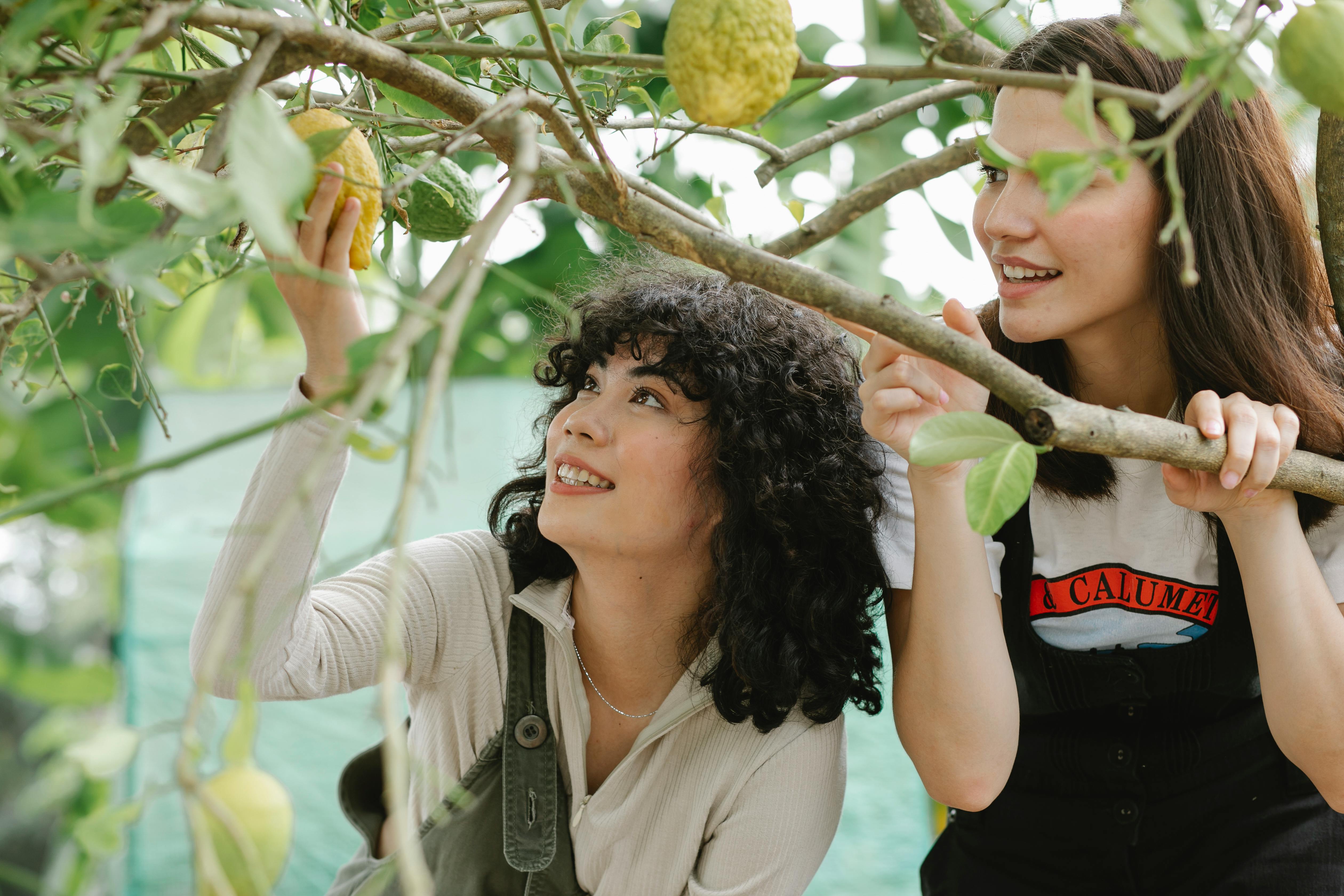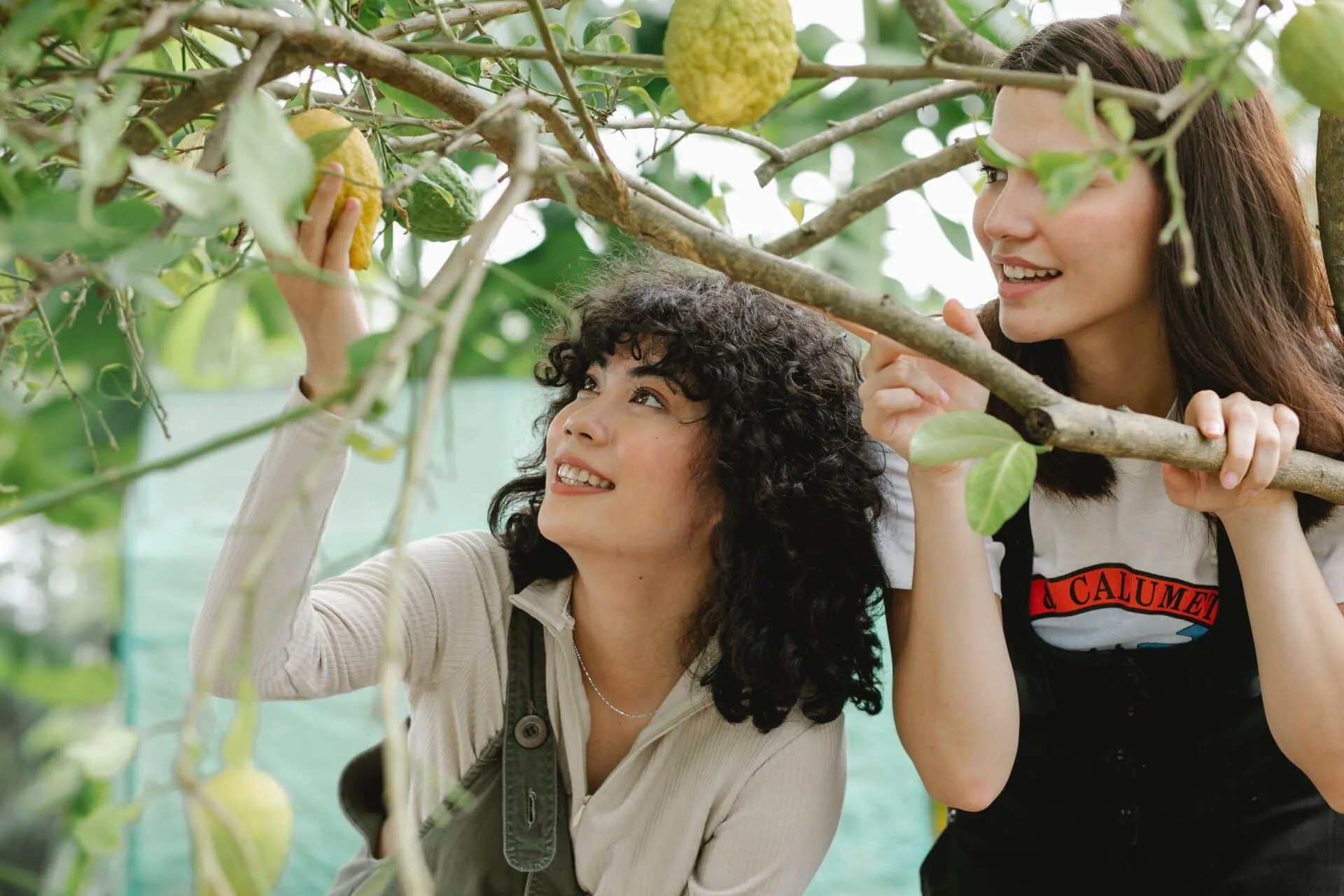Growing multiple types of fruit trees in the same area is a great way to increase the variety of fruits available for harvesting. Planting different fruit trees together can yield a bountiful harvest, but there are a few considerations to keep in mind before planting. In this article, we’ll discuss what you need to know about planting different fruit trees together and how to ensure your success.Different fruit trees include apple, cherry, peach, pear, plum, apricot, nectarine, persimmon, lemon, lime, orange and fig trees.
The Benefits of Planting Different Fruit Trees Together
Planting different varieties of fruit trees together can be extremely beneficial to the health and productivity of your garden. Not only will you be able to take advantage of the different growing seasons, but you will also provide a variety of nutrients for your soil and create a more diverse habitat for beneficial insects. Here are some of the benefits that come with planting different fruit trees together:
Firstly, planting various types of fruit trees together provides a range of harvest times throughout the year. Each type of tree will ripen at different times, so you can enjoy an extended harvest period. This is especially beneficial if you plan to sell your produce as you won’t have to worry about gluts or shortages.
Secondly, planting multiple types of fruit trees together creates a healthier ecosystem in your garden. Each tree has its own unique set of requirements when it comes to soil, moisture levels and sunlight, so they help each other thrive by providing the conditions needed for growth. In addition, having multiple varieties means that beneficial insects such as bees can find food sources throughout the year and help with pollination.
Finally, planting different types of fruit trees together helps to improve the quality and fertility of your soil. The range of root systems from different trees helps to aerate the soil and provides a variety of nutrients that would not be present if you planted only one type. This helps to create strong and healthy plants that are more resistant to disease.
In conclusion, there are many benefits to planting different varieties of fruit trees together in your garden. Not only will it give you an extended harvest period and healthier plants but it also helps create a more diverse ecosystem that is beneficial for all life in your garden.
What to Consider Before Planting Different Fruit Trees Together
When it comes to planting different types of fruit trees together, there are a few things to consider. One of the most important considerations is the size and type of tree. Some varieties of fruit trees are larger than others and need more room to grow. If you plant too many trees in a small area, they will compete for resources, such as water and sunlight, and may not thrive. Additionally, some types of fruit trees require more or less space than others depending on their root system and the climate in which they are grown.
It’s also important to consider the pollination needs when planting different types of fruit trees together. Many types of fruit require cross-pollination from a different variety in order to produce a good crop. If you plant two different varieties that do not cross-pollinate each other, you may not get the expected result. Additionally, some fruits are better suited for specific climates and soil conditions than others; this should be taken into consideration when deciding which varieties to plant together.
Finally, it’s important to consider how much maintenance each variety requires before planting different types of fruit trees together. Different varieties need different pruning techniques or fertilizer applications in order to stay healthy and productive. If you plant two or more varieties that require significantly different care regimes, it may be difficult to manage them all effectively without additional help or resources.
By taking these considerations into account before planting any type of fruit tree together, you can ensure that your plants will get the care they need while still producing a healthy crop of delicious fruits year after year!
How to Plant Different Fruit Trees Together
Planting different fruit trees together can be a great way to maximize the amount of space you have in your yard while also providing you with a variety of fruits. When planting multiple fruit trees together, there are several things to consider, such as size and compatibility of the trees as well as proper pruning and maintenance. By following these tips, you can create a beautiful and productive orchard that will provide you with years of delicious fruit.
The first step is to select the right varieties of trees for your climate. Choose dwarf varieties if space is limited, as they require less room than standard sized trees and can be planted closer together. Make sure that all the varieties you choose are compatible with each other and will pollinate properly when planted together. It is also important to make sure that all the varieties you select are suited for your local climate and soil type.
Once you have chosen the right varieties for your orchard, it’s time to prepare the soil. Make sure the soil is well-drained before planting and add organic matter such as compost or manure to improve drainage and nutrient content. If possible, raise the soil level slightly so that water will drain away from the roots of the trees.
When planting your fruit trees, dig a hole twice as wide and slightly deeper than the root ball of each tree. Place each tree in its hole, making sure that it is level with the surrounding soil. Backfill with soil around each tree’s roots and gently tamp down until firmly packed.
Finally, it is important to prune back any competing branches or shoots from other trees so that your fruit trees have plenty of space for air circulation and light penetration. Pruning should be done at least once a year in order to keep your fruit trees healthy and productive.
By following these steps, you can successfully plant different fruit trees together in an orchard that will provide you with years of delicious fruits!
How to Care for Different Fruit Trees Growing Together
Caring for different fruit trees growing together can be a challenge, but it can also be rewarding. Knowing how to properly care for each type of tree is essential for achieving a successful harvest. Here are some tips on how to care for different fruit trees growing together.
The first step is to make sure that each type of tree is receiving the right amount of sunlight. Different types of fruit trees have different requirements when it comes to sunlight, so it’s important to make sure that all of the trees are getting the appropriate amount of light. Additionally, if there are any trees that are receiving too much or too little light, then they should be moved or pruned accordingly.
It’s also important to consider the soil quality when caring for different fruit trees growing together. Each type of tree has specific soil requirements, so it’s important to make sure that the soil is appropriate for all of the types of fruit trees in the area. Additionally, fertilizer should be applied according to each specific tree’s needs.
Watering is also an important factor when caring for different fruit trees growing together. Each type of tree requires a specific amount of water, so it’s important to make sure that all of the trees are receiving enough water without being over-watered or under-watered. Additionally, if any trees appear to be wilting or drying out quickly, then extra water should be applied accordingly.
Finally, pruning and insect control are essential components when caring for different fruit trees growing together. Pruning helps keep each tree in shape and encourages healthy growth while insect control helps prevent any infestations from occurring which can damage the crop yield significantly. Additionally, any dead branches should be removed promptly in order to prevent disease and pests from spreading throughout the area.
By following these tips on how to care for different fruit trees growing together, you will be able ensure a successful harvest and enjoy a bountiful crop!

Best Practices for Planting Different Fruit Trees Together
It is important to consider a few best practices when planting different fruit trees together. First and foremost, it is essential to ensure that the chosen species of trees are compatible with each other. Different species of fruit trees require different levels of soil nutrition, moisture, and sunlight, so make sure that the environment in which they are planted can accommodate each species’ needs. It is also important to ensure that the root systems of the trees will not compete with each other for resources. Additionally, when planting multiple fruit trees in a single spot, make sure that there is enough room for them to grow and spread without overcrowding one another.
When it comes to spacing between the different fruit trees, it is always best to refer to the specific guidelines for each species. Generally speaking, tree spacing should be determined based on the expected mature size of each tree. This will help ensure that the roots can stay healthy and well-nourished without competing with one another. Additionally, spacing between different types of fruit trees can help reduce insect pests and diseases from spreading between them.
Finally, when planting multiple types of fruit trees together, it is essential to ensure that they have been grafted onto compatible rootstock varieties. Grafting ensures that all of the fruiting wood comes from a single source while still allowing different varieties to be grown on a single rootstock system. This will help prevent any potential incompatibilities between two different varieties from causing issues down the line. Following these best practices can help ensure that multiple types of fruit trees can be planted together in harmony for years to come!
Potential Problems of Planting Different Fruit Trees Together
Planting different fruit trees together can be rewarding, but there are potential problems to consider. One of the biggest issues is that some varieties may be incompatible in terms of growth and pollination. For example, some trees require cross-pollination from a compatible variety in order to produce fruit, while others are self-pollinating and may not need a partner tree. It is important to research individual varieties and pairings before planting multiple trees in the same area.
Another potential issue is that different trees require different levels of maintenance and care. Some varieties may be more prone to pests or diseases than others, which could affect the entire planting area if not addressed properly. Some trees are also more susceptible to extreme weather conditions such as cold or heat, so make sure any mixed planting is in an area with suitable conditions for each variety.
Finally, it’s important to consider the space available for multiple fruit tree varieties as well as their mature size and shape when planted together. Some species have larger root systems than others or require more space for branches and leaves to reach full maturity. Crowding can reduce airflow around plants leading to greater stress on individual trees which can lead to reduced production or even death of plants overall.
Overall, planting different fruit tree varieties together can be rewarding but careful consideration should be taken when doing so in order to ensure successful harvesting and overall health of the plants involved.
What Fertilizers are Suitable for Different Fruit Trees Growing Together?
Fertilizers can be a great way to promote healthy growth and production of fruit trees. However, when it comes to growing different types of fruit trees together, it is important to choose the right type of fertilizer that is suitable for each tree. Different types of fruit trees have different needs when it comes to nutrients, and using the wrong type of fertilizer can have a negative impact on their growth and productivity.
Organic fertilizers are a great option for those looking to grow different types of fruit trees together. Organic fertilizers are derived from natural sources such as compost, manure and other plant or animal products. They provide essential nutrients that help promote healthy growth and production of fruit trees while also helping to improve soil quality. Organic fertilizers tend to be slow-release, meaning they will provide long-term benefits rather than quick results.
Synthetic fertilizers are another option for those looking to grow different types of fruit trees together. Synthetic fertilizers are made from chemical compounds that often contain nitrogen, phosphorus and potassium in specific ratios designed to meet the needs of specific plants. Synthetic fertilizers are often fast-acting, providing quick results but may not offer long-term benefits like organic fertilizers do. It is important to choose a synthetic fertilizer specifically formulated for the types of fruit trees being grown together in order to ensure proper nutrition and health.
When growing different types of fruit trees together, it is important to choose the right type of fertilizer in order to ensure proper nutrition and healthy growth and productivity. Organic fertilizers are a great option as they provide essential nutrients while also helping improve soil quality over time. Synthetic fertilizers can also work if chosen carefully and specifically formulated for the types of fruit trees being grown together.

Conclusion
In conclusion, planting different fruit trees together can be a great way to diversify your orchard. Each tree has its own unique characteristics, and planting them in the same area can bring a range of advantages to your garden. Not only will you get a greater variety of fruit, but you will also reduce pest pressure on individual trees, helping them to thrive together. With careful planning and consideration, your orchard can be an abundant source of delicious fruit for many years to come.
Having multiple species of fruit trees in the same area will require some extra attention when it comes to pruning and maintenance, but the rewards are certainly worth it. Do your research before planting so that you are familiar with the requirements for each species and how they interact with each other. With the right combination of trees, your garden can be a thriving source of delicious produce.



